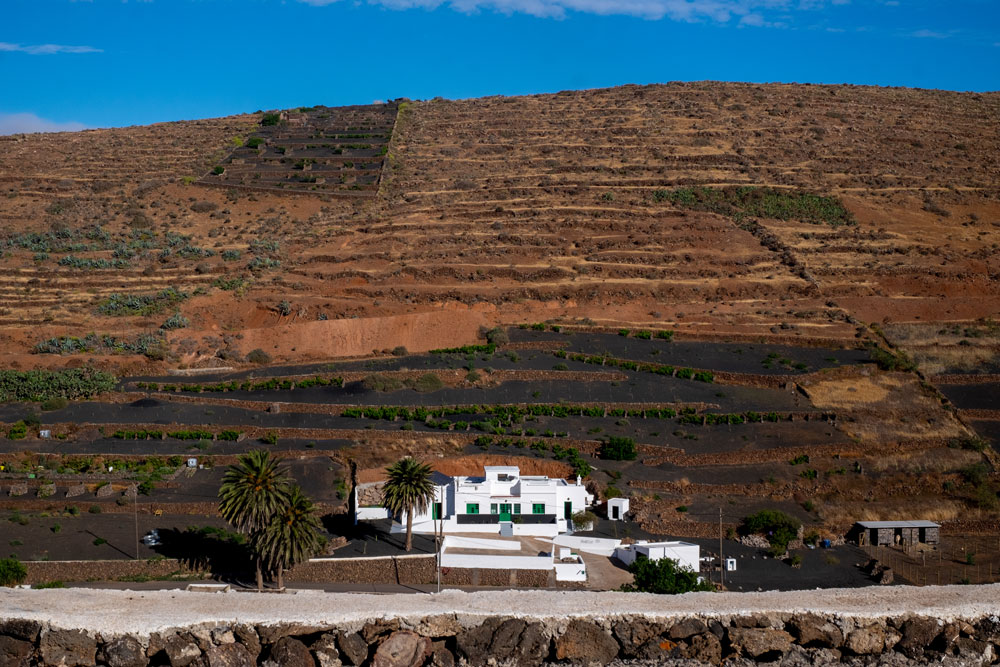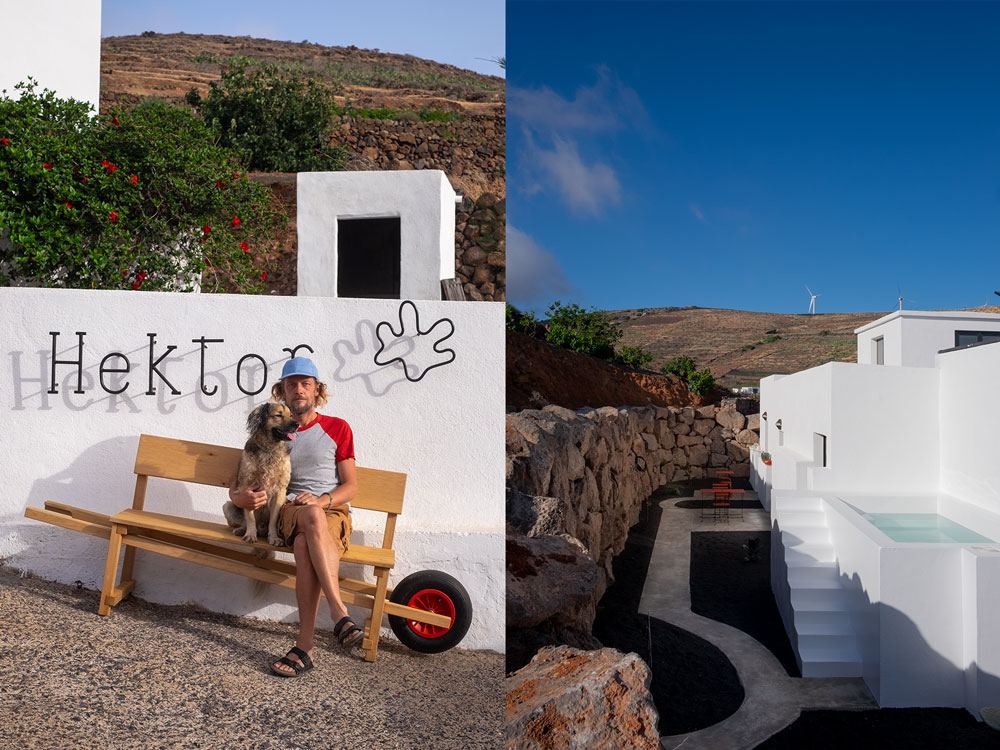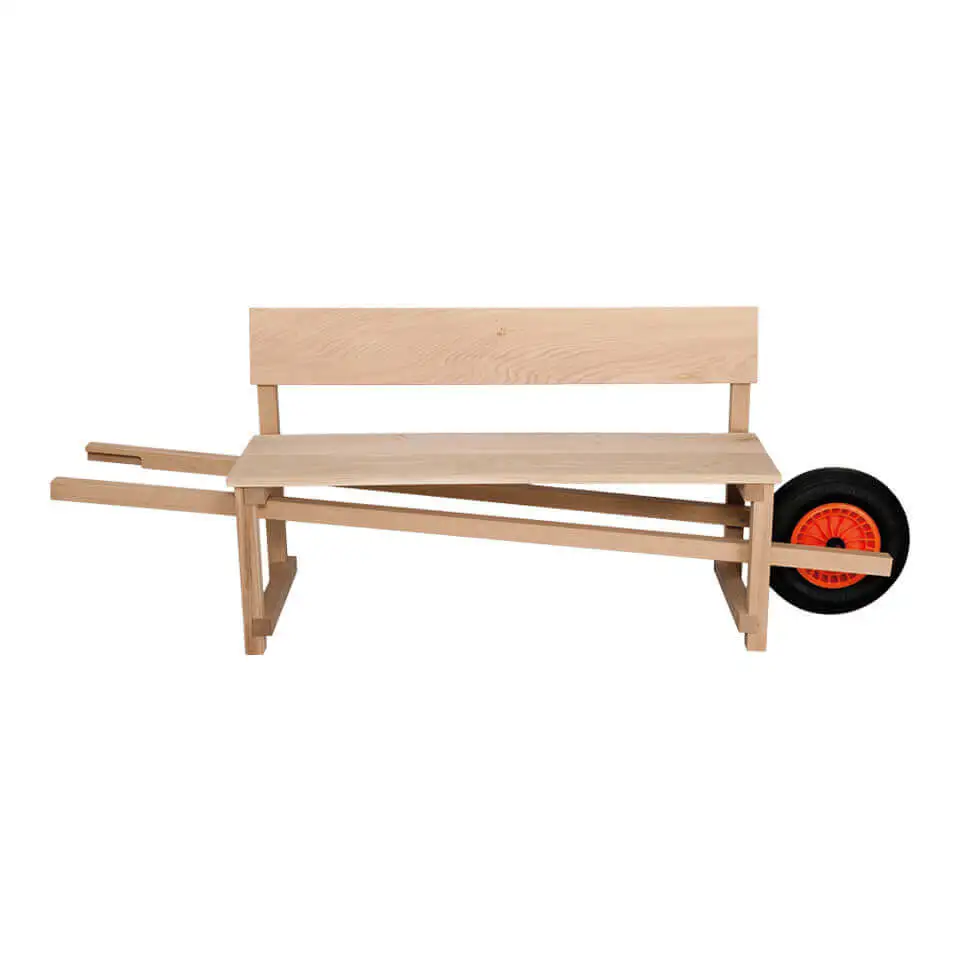
Pequeño es bien: in Lanzarote, wild nature, art and appreciation for the small form a perfect symbiosis
Endless hours of sunshine, azure waters and vast beaches: for many Europeans, Lanzarote is a beloved vacation destination. But those who look beyond the picturesque towns and swaying palm trees see a very different picture of the volcanic island: scorching hot sun, endless drought, raging sea and wild desert winds - an inhospitable landscape where people have managed to build an existence despite the dire conditions. So did Yves Drieghe and Bert Pieters. They traded their magazine-worthy home and successful creative agency in Belgium for an old finca that they transformed into an artist residency meets self-sustaining farm called Hektor. Here's how they created their place.
Among the rugged cliffs, wild sea and scorching sun, the men found an old finca that had been vacant for four years. Instead of immediately embarking on a major renovation, Yves and Bert chose to first just live in the finca and get to know the farm and the island. 'We soon noticed that Lanzarote is more than an island, it is almost a living being,' Yves says. 'Lanzarote is very brutal: the volcanic areas, the hot winds that bring desert sands, the sun that stands the fires in the sky all year round, and the fact that it hardly rains between March and September: it is not actually meant for people to live on. Over the centuries, the Lanzaroteños have adapted their way of life to the island. People here live according to the rhythm of the sun, influenced by the elements, with the seasons. The island makes the man. And you notice that: people here interact with the land without being invasive. The Lanzaroteños realize very well that they depend on nature, and not the other way around.'
'The island makes the man. And you notice that: people here deal with the land without being invasive.'
Lanzarote as inexhaustible inspiration
After ten months of living in the old farmhouse, the men began to see more and more clearly the vague idea they left Belgium with. It was the identity of the island that inspired the men to transform the finca into what it is today. 'Lanzarote is an island where nature meets creativity. The island brings a lot of creativity to artists. Whether they are making ceramics, painting or creating installations, the natural elements of Lanzarote have served as an inexhaustible source of inspiration for centuries. It is nature that defines art.'
‘The identity of the island is reflected in every layer of the house.’
The fact that art plays such an important role on the island is partly due to César Manrique, an important Spanish artist in the 20th century. He was inspired by the island's natural features and prevented the island from losing its culture and identity to mass tourism by organizing protests against high-rise buildings, instituting a construction freeze and ensuring that no roadside advertisements were placed. The traditional architectural style that characterizes Lanzarote also comes from his hand: up to four stories, painted in light and white tones with window frames in blue, green or brown. 'As a tribute to Manrique and the identity of Lanzarote, we kept the finca in this style. We notice that this is doing the community very well: the neighbors are happy to see that the finca has not been converted into a modern villa, but rather has become a place where the identity of Lanzarote is clearly expressed.'
The evergreen of Lanzarote
Once Yves and Bert got the idea of leaving Belgium, it was for good. Going back to the mainland was out of the question for the men. ‘The island’s changed us. If we have learned one thing from island life it is that in city life you are so far removed from nature. While here on the island you are not only surrounded by nature, but also at the mercy of the elements. This makes you realize how insignificant we as humans actually are. On an island like Lanzarote you experience the power of nature and notice that, although as humans we tend to think we can be in control of nature, that is really not the case. And that is something spectacular to realize.' It was a lesson in social engineering: on Lanzarote, nature determines how you live. The weather determines what you can do in a day. 'In the summer we are outside mostly in the evening, during the day it's really not doable. But in winter, it's like a different country here: with milder temperatures and an increase in rainfall, a desert-like island transforms into a green oasis. It is not for nothing that we have dedicated one of the rooms in our guesthouse to Lanzarote's winter greenery.'
Pequeño es bien
It is not only their way of life, but also their mentality that changed. 'Lanzarote is an island where a lot is possible, but nothing is compulsory. In Western Europe, growth and achievement are the holy grail, but here 'nothing is compulsory' is very important, it is a motto that people live by. When the vintners have produced enough to make financial ends meet for the year, they don't start making more wine. Because then there won’t be time for afternoon surfing. People here embrace what is. Something small is often as beautiful as the big, simply because it is there.' Pequeño es bien is therefore a common saying for Lanzaroteños: the small things are good. And that is a mentality Yves and Bert quickly adopted. ‘We used to have a plan for everything, we had everything mapped out, even a five-year plan. Nowadays we just let life happen. What comes, that comes.'




